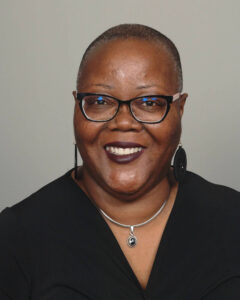
RESOLVED: Storytelling, Healing, and Pedagogy
For the past seven months I have been immersed in storytelling. My small project grant, Black Women’s Storytelling as Healing Pedagogy, has taken me on a journey of wonder, insight, wisdom, knowledge, revelation, and so much more. I had conversations with eleven Black women storytellers who are living their vocational calling at the intersection of the church and academy. Their definitions of story and personal practices of storytelling inform their individual and collective approaches to healing pedagogy that inspires human flourishing. The culminating event of this project was a storytelling excursion to Washington DC, to visit the Smithsonian National Museum of African American History and Culture. This experience propelled me to the mountaintop of storytelling centered on the African Diasporic experience. Let me share one of a multitude of stories that expanded my worldview.
Jim Crow Laws and lynch mobs were a common part of the landscape of the United States prior to the civil war. They continue in a variety of ways beyond the strange fruit that hung from southern trees that Ancestor Billie Holiday sang about. Now unarmed and nonviolent Black men, women, and children serve as target practice for those commissioned to serve and protect.
Remembering the 1920’s to 1930’s in Marshall, Texas, and at Wiley College in particular, Professor Melvin B. Tolson confronted racist attitudes and actions to establish a debate team which he knew would be equal to any white teams during that time. The students’ have been given the name “The Great Debaters” and competed in the first inter-racial debate ever held in the history of the south.
The film, “The Great Debaters,” was introduced to the world in 2007. The story centered around the young students and their coach, Tolson, played by the film’s director, Denzel Washington. “The Great Debaters” is one of my favorite movies because of its historical significance and embodiment of Black Excellence.
During my tour of the museum, I marveled as I thoughtfully and carefully viewed the exhibits and artifacts. One exhibit in particular caught my eye. It was a flier depicting the original Great Debaters from Wiley College. I found myself drawn to the photos of these young men and women, recalling the struggles and obstacles they had to overcome as they sought to establish themselves as just as good or better than their white counterparts in the field of forensics. As I stood there reflecting and paying homage to my Wiley College ancestors who faced the realities of domestic terror in the south, I heard the word “RESOLVED,” in my heart, mind, soul, body, and spirit.
During a debate, a resolve is a specific statement or question up for debate. It is also a determination to do or refrain from doing something. Resolve is to come to a conclusion. I asked God, what is the RESOLVE, or what is to be determined, as I engage, explore, and experience the museum? I was led to Psalm 118: 17. BE IT RESOLVED: “We (Black people) will not die, but live and proclaim what the Lord has done.” This is the story of MY people throughout all generations. We will not die, but live, and will proclaim what the Lord has done. Ancestor Maya Angelou with her soul’s conviction said it poignantly in her world-renowned poem, “And Still I Rise”:
Out of the huts of history’s shame
I rise
Up from a past that’s rooted in pain
I rise
I'm a black ocean, leaping and wide,
Welling and swelling I bear in the tide.
Leaving behind nights of terror and fear
I rise
Into a daybreak that’s wondrously clear
I rise
Bringing the gifts that my ancestors gave,
I am the dream and the hope of the slave.
I rise
I rise
I rise.
RESOLVED—We will not die, but live, and proclaim what the Lord has done.
Hi Rochelle,
Thank you for sharing this story. Over the weekend I got the opportunity to visit the Anne Lowe exhibition at the Winterthur Museum in Delaware with my kids and wife’s cousin. I knew nothing about Anne Lowe before the visit and I was left awestruck at her accomplishments as one the most accomplished designers in America, and who happens to be a Black woman born in rural Alabama. Telling these stories is not only a way to right to wrong of a falsified and incomplete history but a way to remind our marginalized selves, that a rich history is part of the Black heritage, even amidst the terror and pain that has been our heritage.
Keep telling the stories.